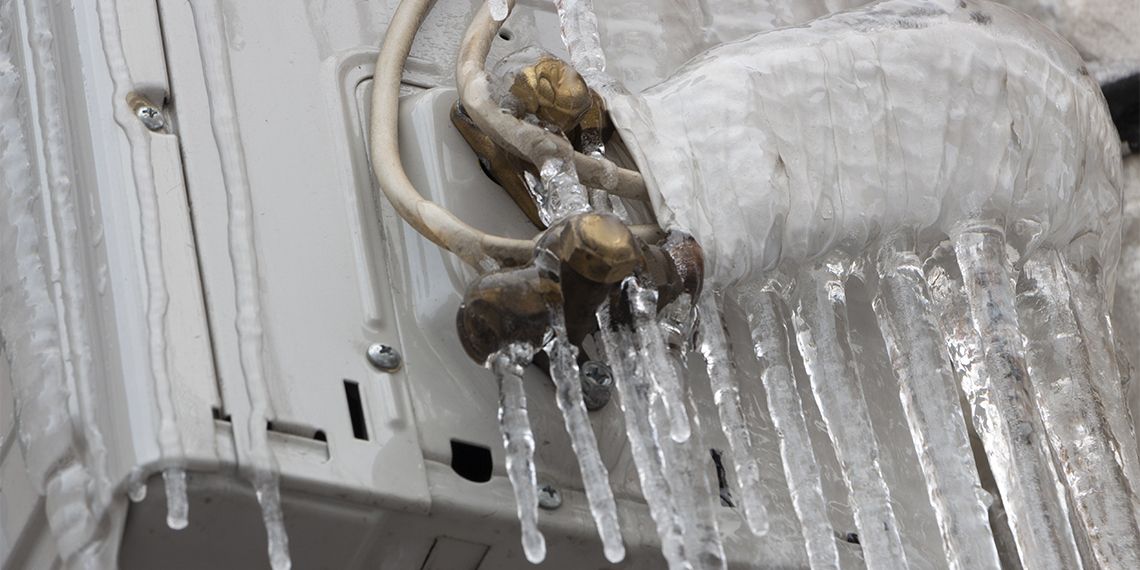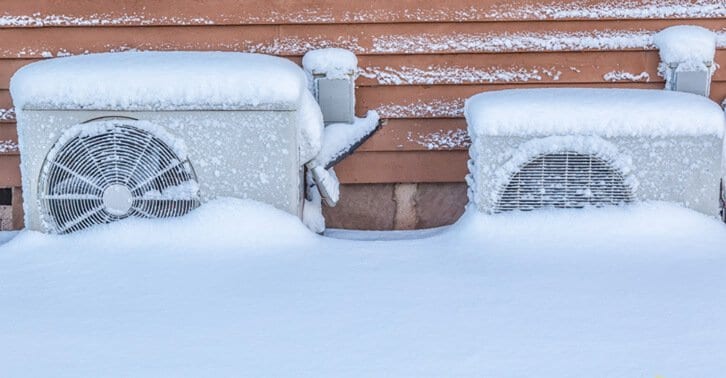Advice on Unfreezing a Frozen AC Pipe - Restoring Proper Operation
Advice on Unfreezing a Frozen AC Pipe - Restoring Proper Operation
Blog Article
Everybody has got their own thinking with regards to What Causes AC Pipes To Freeze?.

Introduction
Discovering that your a/c pipeline is frozen can be concerning, specifically throughout warm summer season when you depend on your a/c one of the most. Understanding what to do in such a scenario is critical to stop more damages to your cooling system and guarantee your comfort inside.
Comprehending the Causes
Numerous elements can contribute to the cold of an air conditioning pipeline. Recognizing these reasons can help you address the concern effectively.
Lack of Airflow
One typical cause of a frozen air conditioning pipeline is inadequate air movement. When the air flow over the evaporator coil is limited, it can create the coil to drop below freezing temperature, bring about ice formation on the pipeline.
Reduced Refrigerant Levels
Not enough cooling agent degrees in your air conditioning system can likewise lead to a frozen pipe. Low refrigerant levels can trigger the pressure in the system to drop, resulting in the freezing of dampness on the evaporator coil.
Cold Weather Conditions
In chillier environments, freezing temperatures outside can add to the freezing of air conditioning pipelines. If your a/c unit is not appropriately insulated or if there are leakages in the ductwork, chilly air can infiltrate the system, triggering the pipeline to ice up.
Dirty Air Filters
Filthy or clogged up air filters can restrict air flow in your a/c system, resulting in various problems, consisting of a frozen pipe. It's essential to replace or clean your air filters on a regular basis to make certain correct airflow and avoid ice accumulation.
Indications of a Frozen AC Pipe
Identifying the indicators of a frozen air conditioning pipe is essential for prompt action.
Lowered Airflow
If you notice a substantial reduction in airflow from your vents, it might show a frozen pipeline.
Ice Buildup on the Pipe
Noticeable ice accumulation on the cooling agent line or the evaporator coil is a clear indication of an icy a/c pipeline.
Odd Sounds from the Unit
Uncommon audios, such as hissing or bubbling, coming from your a/c device can signify that there's ice present on the pipe.
Immediate Actions to Take
When confronted with an icy air conditioning pipeline, it's essential to act promptly to prevent more damages to your air conditioning system.
Shutting off the a/c
The first step is to switch off your air conditioning unit to stop the system from running and exacerbating the concern.
Checking for Blockages
Evaluate the area around the indoor system for any kind of obstructions that might be obstructing air movement, such as furnishings or drapes.
Defrosting the Pipe
You can make use of mild methods like placing towels soaked in cozy water around the icy pipe to help thaw it slowly.
Safety nets
Taking safety nets can help avoid future occurrences of an icy AC pipe.
When DIY Methods Fail
If your efforts to thaw the pipeline or address various other issues are not successful, it's time to call in a professional.
Importance of Hiring a Professional HVAC Technician
A certified HVAC technician has the experience and tools necessary to identify and fix concerns with your air conditioning system safely and effectively.
Normal Maintenance Checks
Set up regular upkeep checks with a specialist HVAC service technician to make certain that your AC system is running effectively.
Altering Air Filters
Frequently replace or cleanse your air filters to stop air flow limitations and preserve optimum efficiency.
Protecting Exposed Pipes
If your air conditioner pipes are revealed to cold temperature levels, consider protecting them to stop freezing throughout winter months.
Seeking Professional Help
If DIY techniques fail to solve the problem or if you're uncertain concerning how to continue, it's ideal to look for aid from a certified HVAC service technician.
Verdict
Dealing with an icy air conditioner pipeline can be an aggravating experience, but recognizing just how to react can help reduce damages and bring back comfort to your home. By understanding the reasons, recognizing the signs, and taking timely activity, you can efficiently attend to the problem and prevent future incidents.
G UP? HOW TO FIX IT?
It happens all over America. And the rest of the world probably. It’s the hottest day ever and for some darn reason your AC isn’t cooling the house. You fiddle with the thermostat to try and fix the problem. Nada. All you can do now is go outside and check the AC unit. You make your way there and find your air conditioner unit is frozen! But how?
In this post we’ll cover how you can tell that your air conditioner has frozen (other than the obvious reasons), what could have caused the freeze, and some of the things you can do about your AC freezing up. And if you have a frozen heat pump condenser, read our blog about it to learn what to do! But remember, it is always best to avoid your AC freezing up with an AC tune up. And if you are moving into a home, it's critical to get HVAC inspection so that you are aware of an AC problems before you move in.
Keep reading and you may be able to fix the frozen AC yourself. If you can’t, call an HVAC specialist. If you live in Maryland, call SuperTech HVAC for AC repair. We’ll take care of it.
How Does An Air Conditioning Unit Work?
How you probably imagine an AC works is wrong. Contrary to popular belief, an AC system does not inject cool air into a building. Instead, it removes the heat from inside and transfers it outside. Cool huh? (Pun intended).There are 4 major components among the 3 stations of an air conditioning system: the evaporator coil, the compressor, the condenser, and the refrigerant – a special chemical that links everything together through a closed loop system.
Station 1:
Warm indoor air is sucked into the return vent, through a filter, and blows over the evaporator coil. The heat is absorbed into the cold refrigerant, turning it from liquid to gas. The air, which is now cool, is blown back into the home to areas that your thermostat, i.e. you, has decided.
Station 2:
The refrigerant makes its way outside the house to the compressor, which squeezes the warm refrigerant, raising its gaseous temperature even more.
Station 3:
When the super hot vapor refrigerant reaches the condenser, the last step, the heat is expelled and absorbed into the outdoor air. The refrigerant instantly cools, which changes it from gas back to liquid form. The cold liquid refrigerant is now ready to return to station 1 and repeat the process.
Is Your AC Freezing Up? Here Are The Signs:
As you may have guessed, your air conditioner unit freezing up on a hot day is not normal.
If this happens, there's no need to panic. Often the issue can be solved with a little troubleshooting. If the AC unit is left frozen for too long however, you may find yourself with a bigger problem.
First things first, how do you know your AC is frozen?
Well, the obvious sign is the ice on your refrigerant line-set pipe. Simply check between your outdoor AC unit and your home's exterior wall to see whether your AC line frozen.
You might also have a frozen evaporator coil. This one's not as easy to check. You'll need to open a panel on the indoor unit to inspect. Don't do this unless you're handy. If you aren't, call an HVAC pro like SuperTech HVAC or you may damage something in the process.

I was made aware of that editorial about How can I fix an air conditioner’s frozen pipe? through someone on our other web page. Sharing is nice. You won't know, you will be doing someone a favor. Thank you for your time. Visit us again soon.
Instant Quote Report this page